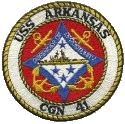Having a battery of hard hitting howitzers that could set up to fire in few minutes, fire a mission and then move out in just a few more minutes compared to the several hours that a towed battery would take was a tremendous advantage. One that does not show up in the game because ALL artillery unlimbers and hooks up again way, way too fast (game engine limit).
Very true, and a main reason why the German command ordered the Wespe, the Hummel, the 10.5cm and 15cm Lorraine Schlepper units, and other mountings of light and heavy field howitzers on captured tank chassis built or modified. But the sIG33 series were built more to support the infantry and destroy houses, strongpoints, and other defenses directly, not by dropping shells on things from on high. In fact, one of the versions (and one I missed in my previous post) was built in response to a demand that "...twelve assault-vehicles mounting a heavy weapon capable of demolishing houses with two or three rounds, were ordered to be completed within 14 days."
Sturminfanteriegeschuetz 33B - also known as the StuIG33B. 24 produced from Dec 1941-Oct 1942 by mounting the sIG33 gun on the same hull as the StuG Ausf E and F/8 vehicles, with a completely enclosed box superstructure. This unit used the Fu.Spr.f. set.





